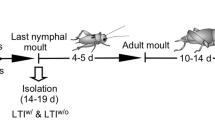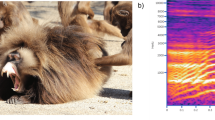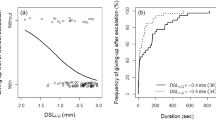Abstract
DURING intraspeciflc interactions, hermit crabs rarely do physical damage to one another, but communicate by means of displays1,2. The aggressive displays executed by a crab during an interaction are determined by a number of factors. Each species has an aggressive repertoire, in which some behaviour patterns occur frequently and others are rare. Every individual has gone through physiological and psychological developmental sequences which affect that crab in any interaction3. Characteristics of the environment will also determine, in part, what will happen in an aggressive interaction.
This is a preview of subscription content, access via your institution
Access options
Subscribe to this journal
Receive 51 print issues and online access
$199.00 per year
only $3.90 per issue
Buy this article
- Purchase on Springer Link
- Instant access to full article PDF
Prices may be subject to local taxes which are calculated during checkout
Similar content being viewed by others
References
Hazlett, B. A., thesis, Harvard University (1964).
Reese, E. S., Z. Tierpsych., 19, 645 (1962).
Hazlett, B. A., and Provenzano, jun., A. J., Bull. Mar. Sci., 15, 616 (1965).
Hazlett, B. A., and Bossert, W. H., Animal Behaviour, 13, 357 (1965).
Thorpe, W. H., Learning and Instinct in Animals, 493 (Harvard Univ. Press, Cambridge, 1956).
Author information
Authors and Affiliations
Rights and permissions
About this article
Cite this article
HAZLETT, B. Temporary Alteration of the Behavioural Repertoire of a Hermit Crab. Nature 210, 1169–1170 (1966). https://doi.org/10.1038/2101169a0
Issue Date:
DOI: https://doi.org/10.1038/2101169a0
This article is cited by
Comments
By submitting a comment you agree to abide by our Terms and Community Guidelines. If you find something abusive or that does not comply with our terms or guidelines please flag it as inappropriate.



